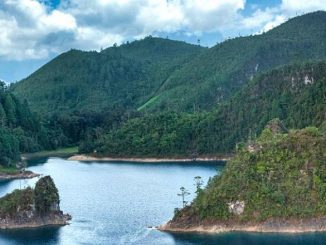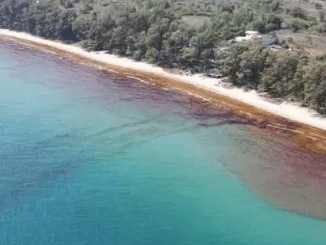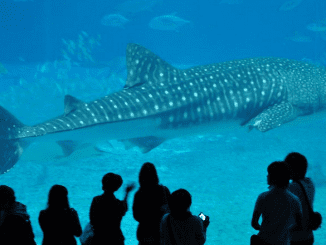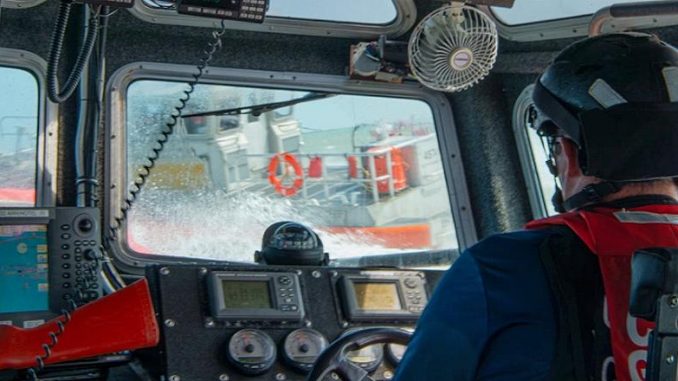
By Benjamin Seidman
SOUTH PADRE ISLAND, Texas, February 18, 2022 (ENS) – “They’ll come into U.S. waters, they’ll fish, they’ll grab as much snapper as they can and they’ll go head back south before we can detect ’em. The average catch they’ll have on board is 1,000 to 3,000 pounds of snapper,” commanding officer of Coast Guard Station South Padre Island, Lieutenant Commander Dan Ippolito told reporters last year.
The station plays a critical role in preventing threatened fish species from being poached by unregulated foreign fishing vessels along the U.S./Mexico maritime boundary line.
Mexican fishing vessels now are prohibited from landing in U.S. Gulf of Mexico ports in a U.S. government effort to pressure the Mexican government to take action against illegal Mexican fishing of prized red snapper in U.S. Gulf waters.
“Effective February 7, 2022, [Mexican fishing vessels] are prohibited from entering U.S. ports, and will be denied port access and services,” the National Oceanic and Atmospheric Administration declared. NOAA criticized the Mexican government for its, “Continued failure to combat unauthorized fishing activities by small hulled vessels in U.S. waters.”
Small Mexican fishing vessels, called lanchas, are sneaking into U.S. waters to fish the productive red snapper and shark fishing grounds off the coast of southern Texas, depleting the valuable and fragile fish stocks. Red snapper are a species of reef fish renowned for their flavor, and shark fins sell for a premium in Asian markets. These species have faced threats from overfishing for a long time because they’re desirable and easy to catch. Only in December 2017 were vulnerable red snapper reclassified from “overfished” to “rebuilding.”
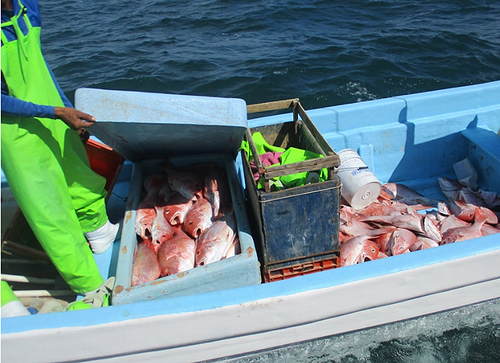
Many of these small lanchas are using longlines to catch more fish. Longlining is an efficient commercial fishing method in which a single long fishing line, often many miles in length, is attached to a plastic or styrofoam float with hundreds or even thousands of hooks mounted on the line at intervals.
This method of fishing is often criticized for the ecological harm it causes. Longlines catch fish indiscriminately, leading to high rates of bycatch, catching animals besides the desired target species.
Unauthorized bottom longlines used by lanchas to catch red snapper result in the entanglement or hooking of endangered sea turtles like loggerheads and leatherbacks. The vertical lines can entangle or lacerate marine mammals. The unselective nature of longlining yields high rates of bycatch of sharks, reef fish, and other marine animals.
Due to these dangers, longlines are banned in most U.S. waters and require a limited access permit along the Gulf Coast. Most permits issued for catching red snapper are for less damaging line and reel fishing . There are only 130 active bottom longline vessels currently permitted in the Gulf of Mexico.
Susan Murray, deputy vice president of Oceana, a U.S. non-profit organization working to protect and restore the global ocean, emphasized the downsides of longlining, saying, “Pelagic longlines have been banned off the West Coast for 40 years for good reason. This wasteful, indiscriminate gear catches and kills endangered and threatened species. When pelagic longlines were last tested off California, the outcome was disastrous – more than 75 percent of what was caught was thrown overboard as waste.”
The U.S. Coast Guard has found that some lanchas even use wall-like gill nets and long trotlines with many hooks, prohibited fishing techniques in the area due to their high rates of bycatch of sharks, endangered turtles, and other marine life.
Mexico Takes Action Against Illegal Fishing
The fishermen responsible for fishing illegally are rarely caught due to their lanchas’ low profiles and fast outboard engines capable of outrunning many Coast Guard vessels. Even when caught and detained, these fishermen face no consequences beyond having their boats and gear confiscated.
Article 27 of the UN Convention on the Law of the Sea, UNCLOS, ensures that all foreign fishermen detained are not prosecuted by the coastal country. When they arrive back in Mexico, they face no consequences and according to U.S. Coast Guard Lt. Commander Ippolito, many even buy a new boat and return to U.S. fishing grounds.
But that is changing. The U.S. border with Mexico is located where the Rio Grande meets the Gulf of Mexico – with Brownsville in Texas on the U.S. side and Matamoros in Mexico’s northernmost Gulf state, Tamaulipas.
In Tamaulipas, Mexican authorities have begun taking action to combat illegal fishing of U.S. Gulf waters.
CONAPESCA, Mexico’s fishery management agency, has begun conducting coastal surveillance, instituting vehicular checkpoints, and speaking directly with fishermen and a fishing cooperative in the area to prevent further incursions.
These actions are primarily taking place near Playa Bagdad, Bagdad Beach, where many of the fishermen who fish U.S. waters illegally are based. The popular beach is located across the Rio Grande just two miles (three km) from Lt. Commander Ippolito on South Padre Island.
“This is all a first phase implemented to definitively resolve this problem,” explains Mexico’s National Commission for Aquaculture and Fisheries, CONAPESCA.
The Government of Mexico has strengthened the “inter-institutional tasks of awareness, ordering, inspection and surveillance in the area” through the Ministry of Agriculture and Rural Development, and through CONAPESCA, and in coordination with the Secretaries of the Navy, Foreign Affairs and Economy, as well as the National Guard and the National Institute of Migration.
Mexican authorities have carried out air and sea tours along the border coastline, as well as land tours and vehicular checkpoints in the area of Playa Bagdad.
Mexico must act quickly to regain the favor of its most important seafood trade partner – the United States.
Featured image: Coast Guard Station South Padre Island crew members, aboard a 33-foot special purpose craft law enforcement, conduct non-compliant vessel, NCV, training near South Padre Island, Texas. NCV training is essential for Station South Padre Island to maintain readiness for response to the high number of Mexican lancha interdictions along the Gulf Coast. October 14, 2021 (Photo by Petty Officer 3rd Class Alejandro Rivera courtesy U.S. Coast Guard)

